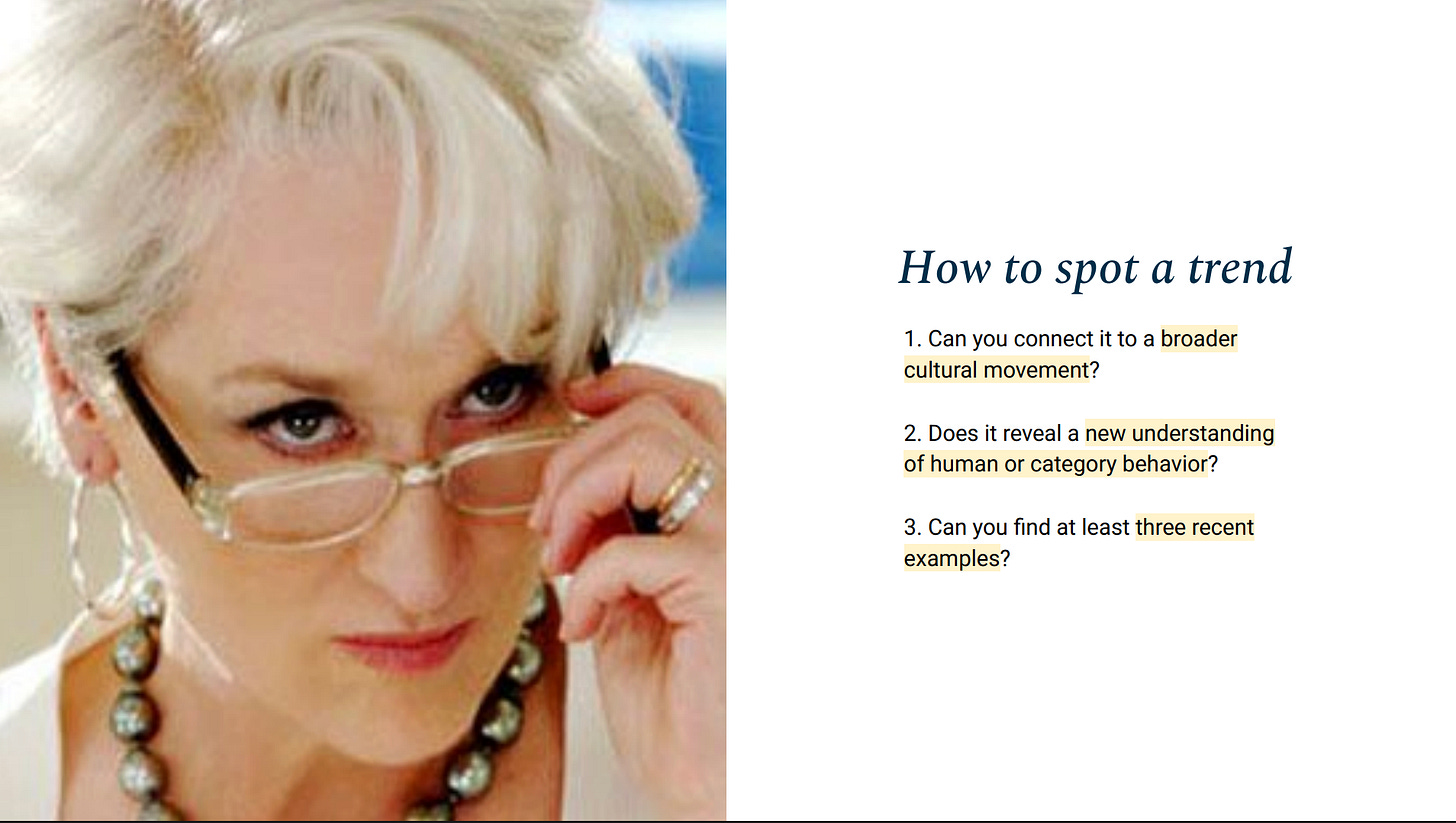stop calling everything a trend
Marketers have turned “trend” into a catch-all for memes, vibes, and hype. However, that laziness makes the word useless.
I was scrolling LinkedIn the other day (already a mistake) and I stumbled on a post about a campaign in Québec for young people. The agency was bragging that they had tapped into the trend “out of the groupchat.” And I just sat there staring at my screen thinking: wait, what? Since when is that a trend? Since when did any random expression that’s been around for years qualify as a “trend”?
The concept of a trend has become a catch-all word in marketing and beyond. It used to mean something: a measurable pattern of change over time, a signal you could actually track. Now it just means… whatever looks shiny, Gen Z-ish, or vaguely internet-coded. A word, a vibe, a TikTok audio? Congratulations…it’s a trend.
The irony is that the more we inflate the word, the less useful it becomes. When everything is a trend, nothing is. “Trend” no longer tells me if we’re talking about a macro shift in behavior, a fleeting meme format, a data pattern, or just a joke you saw on Twitter. We’ve collapsed all of these categories into one vague bucket because it feels safer to say “we’re on trend” than to admit we’re chasing relevance without much thought.
Here’s the thing: spotting a real trend is harder than pointing at hype. Jennifer M. Chang has been vocal about this—reminding us that a trend isn’t just something circulating online, it’s something you can tie back to broader cultural movements, to human behavior, to repeated signals across different contexts. That’s the work.
In my own work I’ve put it this way: Signal → Adoption & Aggregation → Trend.
A signal is an early spark, a weak but noticeable shift on the fringes.
Adoption and aggregation happen when that spark repeats, gets picked up, travels across spaces, accounts or platforms.
Only then does it harden into a trend: a recognizable pattern with staying power.
Marketers collapse all of this into one word. They see a phrase floating around for a week and declare it a trend. But hype is not a trend. A meme is not a trend. A cultural code is not a trend. Those things have their own value, but flattening them all under the same banner makes the word meaningless.
And yet trends do matter. They’re cyclical, generational, contextual. Millennial pink lingered far beyond a single season because it symbolized a softer, more optimistic response to the late-2000s recession and the rise of Instagram aesthetics. Quiet luxury didn’t appear because a brand willed it into existence: it grew out of economic whiplash, pandemic restraint, and the rejection of flashy logos. Even girl dinner, born as a TikTok joke, spread because it reflected something deeper: women reframing everyday finance-related rituals with humor and solidarity.
Compare that with a phrase like “out of the groupchat.” Catchy? Sure. Relatable? Maybe. But it’s not a trend. It’s a cultural code, a momentary meme. It doesn’t reveal a generational mood or a shift in behavior. And that distinction—between a pattern that persists and a joke that circulates—is exactly why the word trend has been emptied of its meaning.
So maybe the better move isn’t to kill the word, but to be more disciplined with it. If it’s hype, call it hype. If it’s a meme, call it a meme. If it’s just a fleeting burst of collective attention, call it a moment. If it’s a cultural reference that signals belonging, call it a code. Save “trend” for what it really is: pattern plus time (aka Signal → Adoption & Aggregation → Trend).
Because if the only way you can justify an idea is “we tapped into a trend,” then you don’t have an idea. You have a shortcut. And advertising (and our society as a whole) deserves better than shortcuts.




I love the way you’ve broken down the process of something turning into a trend